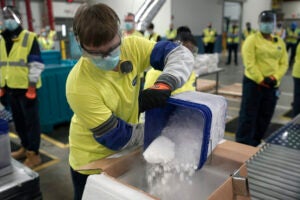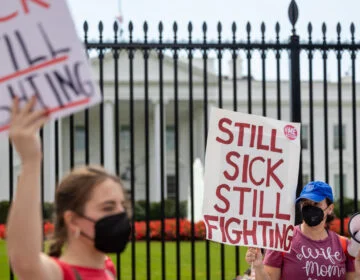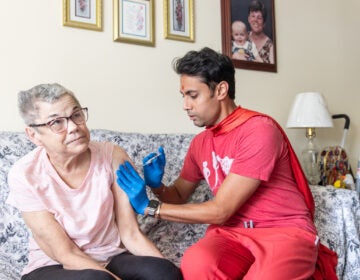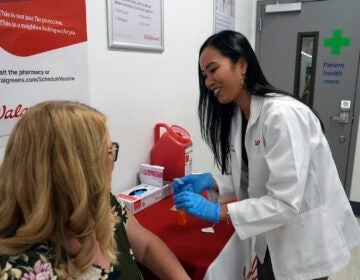Why COVID-19 hot spots are still happening — and how to prevent them
Seemingly anomalous COVID hot spots crop up, often where vaccination rates are high overall. Is there something localities can do to avoid it?
Listen 3:29
File photo: In this Sept. 21, 2021, file photo, visitors sit among white flags that are part of artist Suzanne Brennan Firstenberg's "In America: Remember," a temporary art installation to commemorate Americans who have died of COVID-19, on the National Mall in Washington (Patrick Semansky/AP Photo)
Ask us about COVID-19: What questions do you have about the coronavirus and vaccines?
This is one of a series of articles in which reporters from WHYY’s Health Desk Help Desk answer questions about vaccines and COVID-19 submitted by you, our audience.
With vaccines now authorized for most kids and boosters approved for people at higher risk of COVID-19, many have been able to breathe a sigh of relief, if just a small one.
But there are causes for concern, too, as seemingly anomalous COVID hot spots crop up, often in places where vaccination rates are high overall.
Are these outbreaks just random and unlucky? Or is there something localities can do to prevent becoming hot spots themselves?
The concern is especially worrisome in Pennsylvania, where cases have started to creep up again after being on the decline for most of the month of October.
The fear is that the rise could end with the commonwealth resembling other places where the virus once seemed to be under control. Overseas for example, Germany, which was lauded for its initial pandemic management tactics, has just seen its highest surge of cases yet.
Here in the United States, Vermont had kept COVID-19 at bay more successfully than most other states throughout the pandemic. When cases were surging virtually everywhere else, they were under control in the Green Mountain State. But now they are rising there, alongside hospitalization rates, even as the state boasts one of the highest vaccination rates in the nation.
What’s going on?
First, the statistics can be misleading without looking at the larger context. While there aren’t very many unvaccinated people left in Vermont, the outbreaks there are still being driven by them. In Germany, too, 70% of adults are vaccinated. But those ending up in the hospital, testing the capacity of the country’s health care system, are almost entirely unvaccinated due to pockets of vaccine resistance across the country.
Neal Goldstein, an assistant research professor of epidemiology and biostatistics at Drexel University, said the data shows vaccination is still the best tool when it comes to preventing further spread of COVID-19 and severe illness.
“Really, what we’re seeing … is still a disease of the unvaccinated,” Goldstein said.
The rates of people who are unvaccinated becoming infected with or hospitalized for COVID-19 in Vermont is several times greater than the rates are for people who are vaccinated, according to the state data.
So while it may seem like the rise in cases is an indication that the vaccines aren’t working, if you were to strip from the tally the cases among unvaccinated people, you wouldn’t see quite as alarming a spike.
And, in fact, there aren’t that many people in Vermont at all, making the spike in cases appear more dramatic than it would elsewhere. Yes, rates are higher than ever before, but there are still only an average of 310 new cases per day at the current peak. For comparison, at the height of its biggest surge, Pennsylvania saw an average of 10,000 new cases per day.
That doesn’t mean the same thing couldn’t happen here, though, and that the consequences wouldn’t affect more people.
In Pennsylvania, the increase in cases is driven by high rates in a few places: Warren, Clinton, Jefferson, Potter, and Bradford counties had the highest number of recorded cases per capita over the past week. Less than 60% of residents over 12 are fully vaccinated in each of those counties, compared to 71% statewide. Specifically, Potter and Bedford have among the lowest vaccination rates, with 38% and 42% of adults vaccinated there respectively.
Once again, the experts say the key to preventing more spread is to increase vaccination rates among the unvaccinated.
“It is unrealistic to expect zero cases, it has been unrealistic for a while,” said Goldstein. “That … suggests a shift in the public perception as to what’s realistic for us moving forward, and the metric shouldn’t be that there is no COVID circulating in the community, but rather the important metrics are the ones about hospitalizations and deaths.”
Where do we go from here?
At this point, it’s not possible to eradicate the coronavirus, said Goldstein. There’s no magic switch that’s going to end the pandemic. Instead, the questions are: how to control the spread, and how much of the virus can we live with?
“There is no zero risk mentality that we can have anymore,” he said. “But we need to get the risk to a point where it is manageable and understandable.”
The progress being made in the management and treatment of the disease itself in a hospital setting is somewhat of a silver lining, he said.
We could get COVID-19 to be a disease like the seasonal flu, Goldstein said: The disease will always be here, but people can get vaccinated for it; some people will still be infected and get sick enough to end up in a hospital, and they can be treated. It will become endemic — a disease that continues to circulate for years to come.
What complicates disease containment is that it is as much a matter of politics and other societal forces as it is a matter of epidemiology, said Michael LeVasseur, an assistant teaching professor of epidemiology and biostatistics at Drexel University.
“This idea that we don’t want to wear masks, we don’t want to stay home, we don’t want to get vaccinated, those all play a part in this as well,” LeVasseur said, noting that these, and other questions about what responsibility individuals owe to their communities and one another, will affect the ongoing spread of disease.
So unfortunately, the key to preventing further outbreaks may sound all too familiar.
At this point, people already know which strategies are effective in preventing the spread of the coronavirus, LeVasseur said: getting vaccinated; wearing masks; weighing the risks of large gatherings.
“I think we’ve squeezed all the juice out of that fruit, to be perfectly frank.”

Get daily updates from WHYY News!
WHYY is your source for fact-based, in-depth journalism and information. As a nonprofit organization, we rely on financial support from readers like you. Please give today.


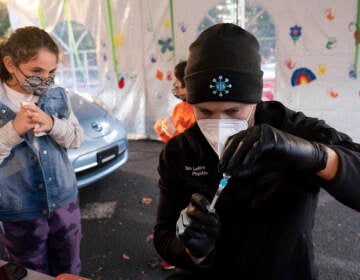
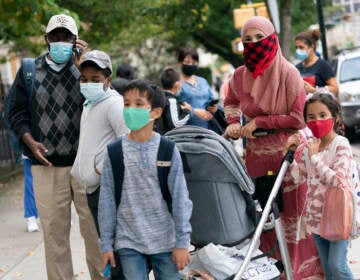
![CoronavirusPandemic_1024x512[1]](https://whyy.org/wp-content/uploads/2020/03/CoronavirusPandemic_1024x5121-300x150.jpg)
